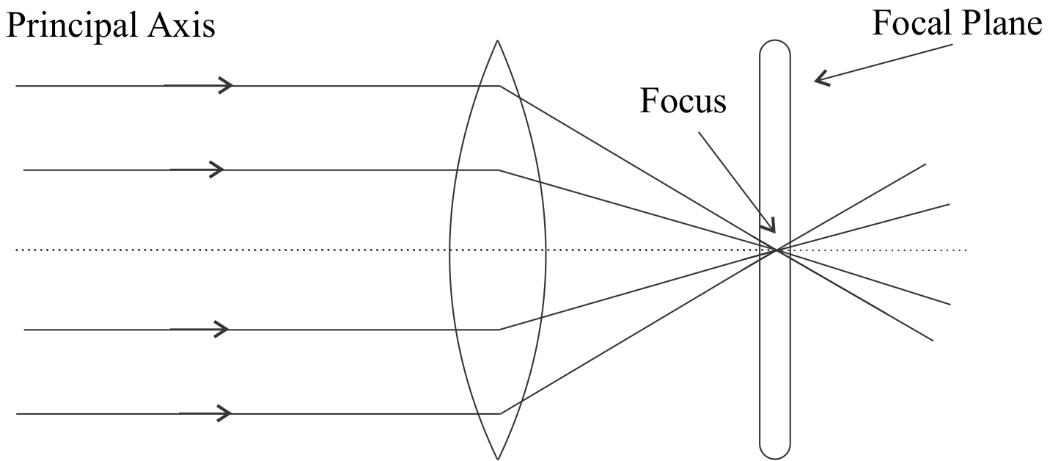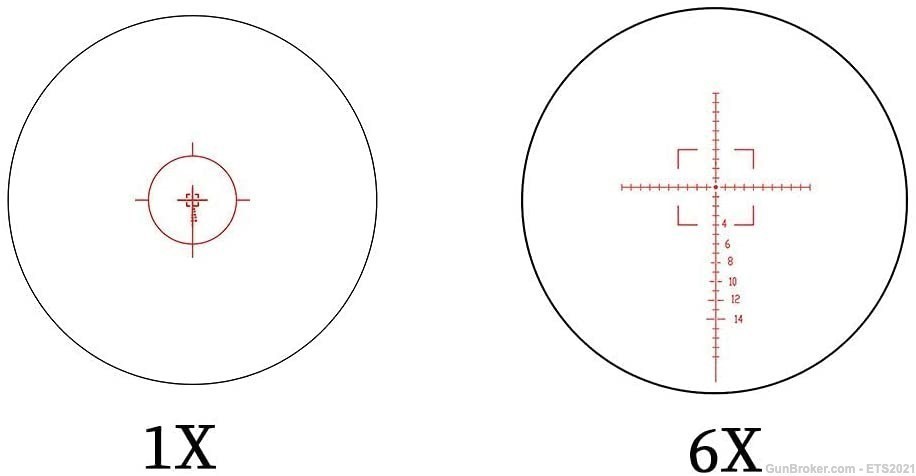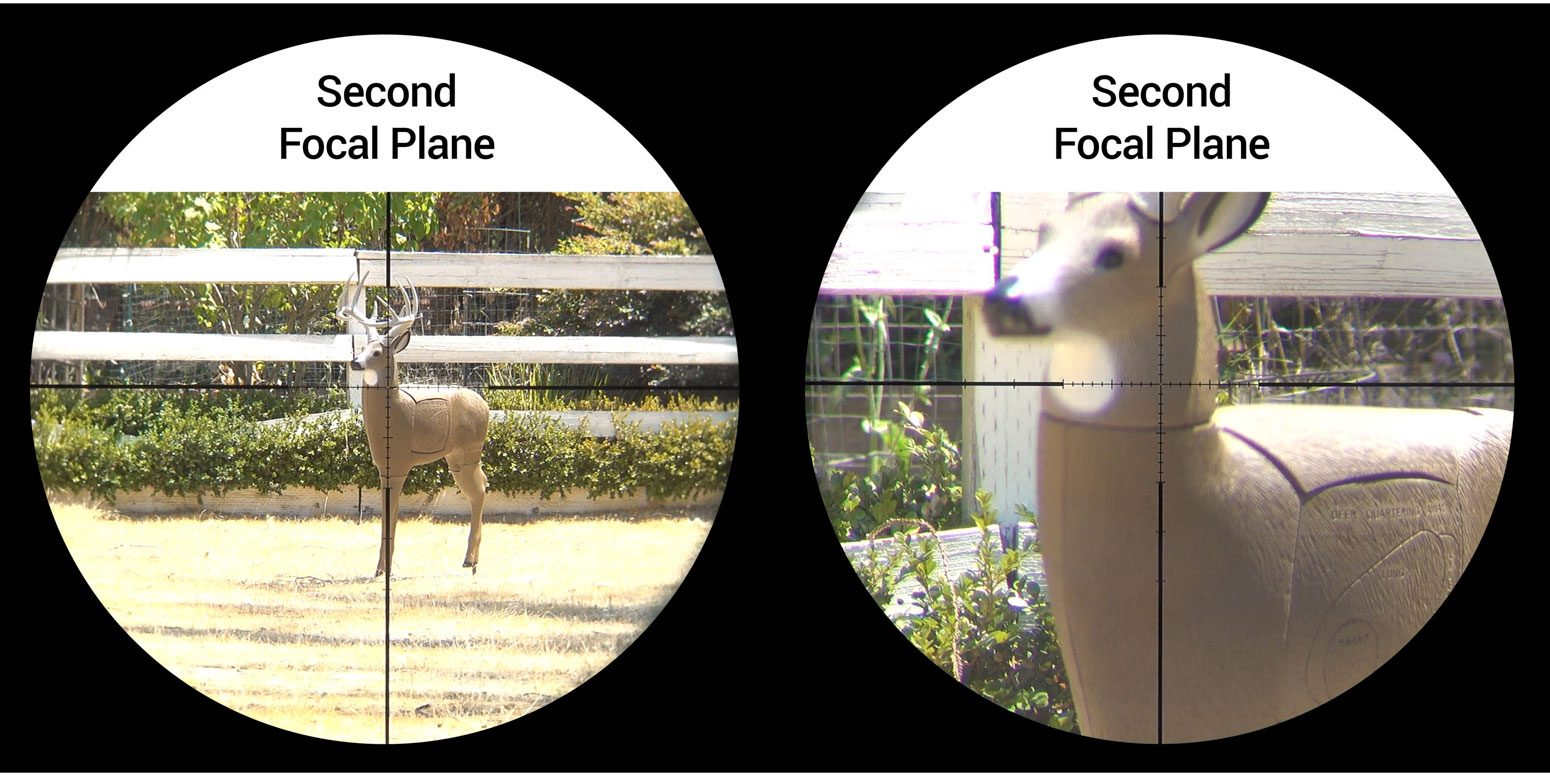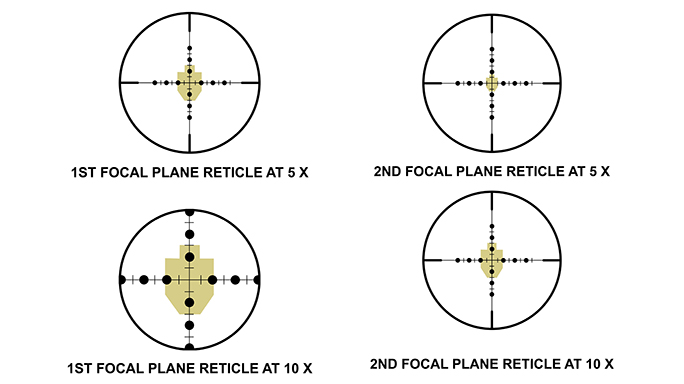Rifles are one of the most popular gun choices for hunters all over the world. When using a rifle, you need to choose the ideal rifle scopes for your needs and your specific hunting conditions.
Based on your research, you’ve probably reached the bottom line that your choice comes down to first focal plane vs. second focal plane scopes.
A first focal plane scope should be used by those that are going to be stalking game at long distances. This is due to the fact that this scope’s reticle changes size proportionately to the magnification of the scope. Second focal plane scopes are better in low visibility.
Read on to find out more about the few distinctions between first focal plane scopes and their second focal plane counterparts, as well as the pros and cons of using each one. This guide also includes guidelines on the best conditions for using each type of scope.
What is a Focal Plane?

Before we dive into the differences between a first focal plane scope and a second focal plane one, let’s first have a brief overview of what a focal plane is.
The scope of any rifle works using an optic lens, and the focal plane is a characteristic of any lens. It’s the point at which the light waves going through the lens all converge at a single point. This creates an image that your eyes can receive and relay to your brain to be deciphered.
When it comes to rifle scopes, manufacturers like Burris and Bushnell can opt to place the reticle at one of the scope’s two focal planes.
The reticle is the component that allows you to see the crosshairs when you look through the rifle’s scope.
What is a First Focal Plane Scope?

In a first focal plane scope rifle, the reticle is positioned at—you guessed it—the first focal plane. So, what does this mean for you when you look through the rifle’s scope?
The reticle of first focal plane scope rifles changes in size at a rate proportional to the change of the magnification level.
Therefore, as you set your rifle to a higher magnification, the crosshairs you see will grow with the image and vice versa.
In practice, this means that the units that each hash mark on the reticle represents remain constant regardless of the magnification level you’re using.
Pros
The fact that the reticle’s size changes proportionately along with the magnification level makes first focal plane scopes ideal for hunters eyeing targets from a long distance.
This is because it allows you to use the reticle’s hash marks to gauge the windage accurately, making you more likely to hit the target.
Cons
However, first focal plane scopes aren’t ideal for all situations. If you intend to go hunting in an area with low visibility due to heavy vegetation and lighting that’s less than ideal, a first focal plane scope is probably not the best choice.
The reason for this is that at very low magnification, you’ll be straining your eyes to see the reticle, let alone use it to judge the windage. This renders the main advantage of first focal plane scopes useless.
What is a Second Focal Plane Scope?

The main distinction between second focal plane scopes and their first focal plane counterparts lies in the behavior of the reticle in relation to the scope’s magnification setting.
Unlike first focal plane scopes, the reticle in second focal plane ones has a constant size regardless of the magnification level you set your rifle’s scope to.
This is probably more in tune with what you’re used to, as second focal plane scopes are the ones that are traditionally used by hunters.
The unchanging size of the reticle in second focal plane scopes makes it easy to see even at the lowest magnification setting of your scope. However, this improved visibility comes with an important caveat.
Since the reticle’s size doesn’t change as you zoom in and out, the hash marks on the crosshairs won’t give you an accurate reading of the windage and other important parameters. This makes it more difficult to hit your target from long range.
The only time where you can use the hash marks reliably is when you set the scope at its highest magnification level.
This doesn’t necessarily have to be the case, but most manufacturers opt to calibrate the reticle to this level of magnification.
Pros
Second focal point scopes shine in situations where first focal plane ones fail to deliver.
They’re the ideal choice of scope when hunting in dark, low visibility areas with lots of trees. This is because the reticle remains large even at super low magnification, making it easy to see.
When you’re hunting in these conditions, you’re probably going to be stalking a target at close range. In turn, the fact that you won’t be able to use the reticle to accurately measure certain parameters won’t really make much of a difference.
Cons
On the other hand, second focal point scopes aren’t exactly the best to use when hunting game at long distances.
This is because, in these situations, you’re likely to be changing the scope’s magnification quite a lot as you try to get the best line of sight for a clean shot.
This is when the limitations of the second focal point scope become glaring. The reticle won’t give you a reliable read on the windage, making your task of hitting your target a difficult one.
However, some would argue that you’re going to settle on your scope’s highest magnification level more often than not during long-range hunting. So, the reticle will be correctly calibrated and will allow you to get an accurate read of the windage.
First Focal Plane vs. Second Focal Plane: Which Is Better?

You’re probably asking yourself, are first focal plane or second focal plane scopes better? Well, there’s no clear-cut answer to that question; it simply depends on what works for you.
If you’ve been using a second focal plane scope for quite some time, you’ve probably grown comfortable with it. So switching to a first focal plane one may be a hassle you don’t want to go through, regardless of the advantages first focal plane scopes offer.
Your choice of scope should also be heavily influenced by the type of hunting you’re going to be doing. If you’re going to be hunting in the open countryside, a first focal plane scope is the way to go. The dynamism of this scope’s reticle will allow you to toggle its magnification level without facing any issues.
You’ll be able to gauge the windage and holdover with ease. Holdover is the parameter that accounts for the effect of gravity on a bullet. It becomes more and more important as the distance between you and your target increases.
Correctly accounting for holdover and windage makes your life so much easier when you’re trying to hit your target from long range.
On the other hand, second focal plane scopes are the right choice if you’re going to be hunting in dark, low visibility areas with heavy vegetation. They’re also better for when you’re stalking a target at close range.
The reticle will remain the same size no matter how low you set the magnification. Therefore, you’ll be able to clearly see it despite the murkiness of your surroundings.
Additionally, the main disadvantage of second focal plane scopes is rendered irrelevant when hunting at close range. This is because windage and holdover won’t be much of a factor in such situations.
Although we can’t say that one of these scope types is definitively better than the other, it can be argued that the second focal plane scope is more versatile. This is because it can perform at long range better than the first focal plane scope can perform at close range.
Final Thoughts
When you’re hunting using a rifle or spotting scope, knowing which type to use is important. By making the right choice when it comes to the scope, you’ll be much more likely to hit your target.
Your choice will come down to a first focal plane vs. second focal plane scope. The main thing you need to take into consideration in order to make the right choice is the conditions in which you’ll be hunting.
If you plan on venturing into the open countryside and stalking your prey from a long distance, a first focal plane scope is the best choice for you. This is due to the way its reticle changes its size according to the magnification level you’re on.
In contrast, if you’re going to take a trip into the woods, then you should probably go with a second focal point scope. This scope performs much better when hunting at close range in low visibility.











Great this article explained
FFP 1 and 2 very well, very
informative.